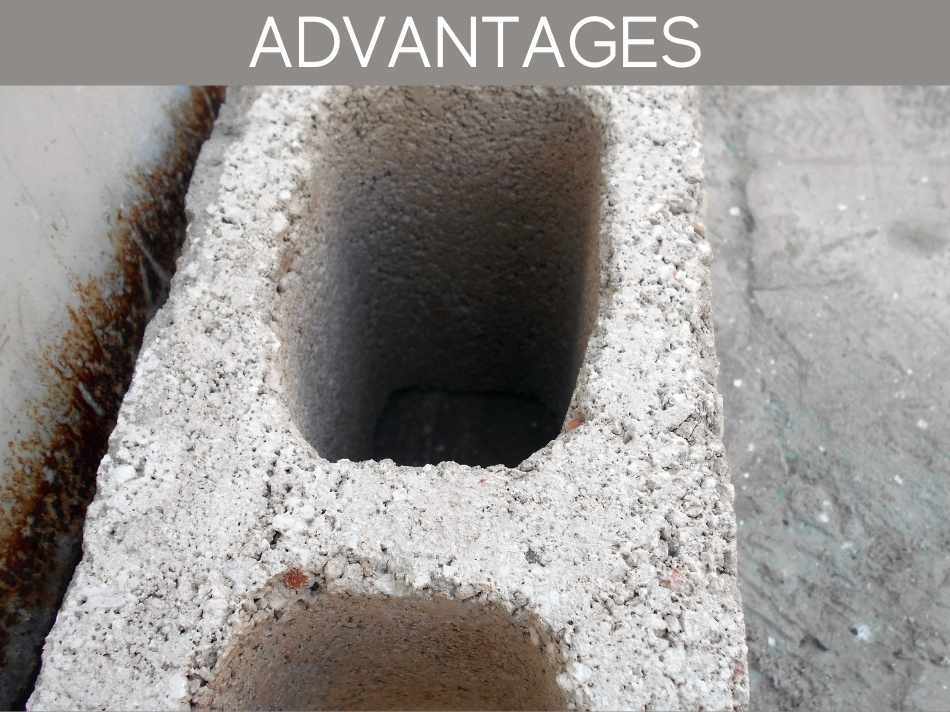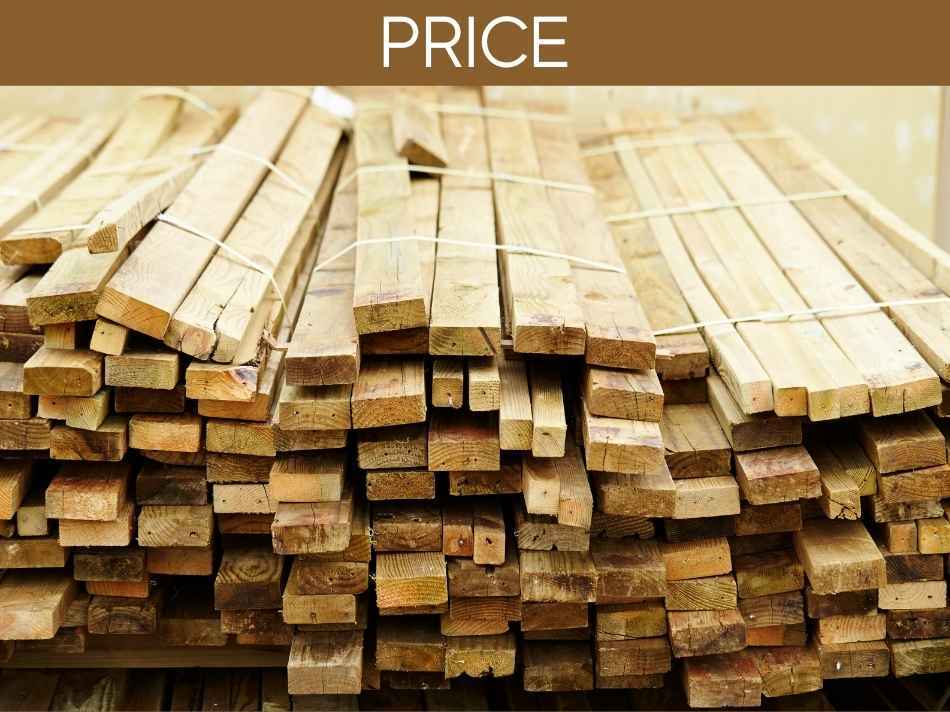Raised beds are a simple way to make backyard gardening easier, more accessible, & work the soil earlier in the season. But it can be difficult to know which material to use to make a raised bed when there are so many options to choose from: cinder block vs. wood raised bed?
Cinder blocks and wood raised beds are both great options, but each has its downsides. Cinder blocks can contain harmful chemicals that could contaminate plants; however, they’re affordable. Wood is safer for edible plants, but it’s prone to rotting and isn’t always sustainably sourced.
Let’s take a closer look at each material and why they should and shouldn’t be considered for a raised bed.
table of contents Cinder Block BedsAdvantagesAffordablePortableVersatileDurableDisadvantagesDurabilityHealth ConcernsHigh embodied energyVoid of ColorWood Raised BedsAdvantagesAccessibilityAesthetically PleasingEasy AssemblySafe for PlantsDisadvantagesDeforestationPriceRottingConclusion
Cinder Block Beds

When you’re thinking of cinder block vs. wood raised beds, you might consider cinder blocks for a number of reasons. Cinder blocks are typically used for budget-friendly, versatile landscaping. Let’s take a look at some of the factors that people consider when they’re deciding whether or not to use cinder blocks for a raised bed.
Advantages

Affordable
Cinder blocks are super affordable. They’re typically around $2 or less per block at most local hardware stores. Some stores might offer discounted prices for bulk purchases. In most cases, cinder blocks might be the most affordable way to create a raised bed, and they’re typically the ideal choice if you have a large area to turn into a raised bed.
Portable

A single block is lightweight and easy to carry. You can place several of them on a dolly or wheelbarrow and easily transport them from the back of your car to the backyard. This is a big reason why many people choose to use cinder blocks for raised beds. Better yet, building a raised bed can easily be a family weekend activity since children can carry them, too.
They can easily be set up wherever you need them in your backyard. Whether it’s on a deck, away from the door, or in the middle of the yard, the portability of the pieces will allow you to place them however you need.
Versatile
Cinder blocks are highly versatile. Their plain grey color allows them to fit right into any landscape, but they can also be decorated with paint or mosaic tiles. If you don’t want grey, color them however you’d like to create a pop of color in your backyard.
You can also stack them in multiple ways. You can create a border with all of the blocks stacked up neatly, or you can stagger them to create an appealing design. You can also turn some of them outwards and use the holes to hold small pots to create some depth to your landscaping.
Durable
Chances are, cinder blocks will outlast you. For raised garden beds, cinder blocks can create a very stable raised bed. Even if you choose not to cement them together, the weight and friction of the blocks against each other tends to keep them in place and prevent shifting. Plus, you can secure trellises and twine to the cinder blocks, without worrying that they’ll fall apart in high winds.
Disadvantages

Durability
Even though cinder blocks are highly durable, if you live in a USDA zone that gets tons of rains, the constant exposure to water can cause cinder blocks to chip and crumble, eventually causing them to leak. Once they start crumbling, you might find the bits and pieces in your soil, which can be a health concern, as discussed in the next section.
Cinder blocks are sturdy despite their ability to crumble. It will take a long time for the crumbling process to start. Fortunately, they’re inexpensive to replace, so you can easily repair your raised bed if you start to see it deteriorate.
Health Concerns
There are some health concerns associated with cinder blocks. Cinder blocks consist of cement, sand, and small stones. Fly ash is typically another product that’s in the blocks. Fly ash is what’s left behind when coal is burned, which is not a clean process. The ashes usually contain harmful materials like heavy metals and silica, both of which can be harmful when breathed in.
High embodied energy
Since cement requires an enormous input of heat to create. In fact, cement production is the single most energy-intensive of all manufacturing industries. So, if you’re trying to minimize your carbon footprint, cinder blocks and any cement-based material should be avoided. If you’re dead-set against using wood for raised beds, use locally-sourced stone or concrete rubble instead (where you’re re-using the concrete instead of creating new concrete).
Void of Color

While some enjoy their grey color, others might think cinder blocks are too boring compared to wood raised beds. If you don’t have a creative eye and aren’t able to create interesting patterns or setups with the cinder blocks, you might find that they look a little boring in the garden.
This is completely based on personal taste. Some enjoy the simplicity of the blocks, while others like their garden to be a little more exciting.
Wood Raised Beds

On the flip side of the cinder block vs. wood raised bed question, wood raised beds are preferred by those who like a sleek look to their garden. Just like cinder blocks, they have their pros and cons.
Advantages

Accessibility
If you need a waist-high raised bed for easy access, wood is the best option for you. You can build legs and a bottom with fewer pieces than you would if you were to do it with cinder blocks. It’s the ideal choice for those who want to build an accessible raised bed that’s raised off the ground.
Aesthetically Pleasing

Wood raised beds are typically more pleasing to the eye than cinder blocks. This will vary from person to person. Many people prefer a natural wood look next to the plants rather than the industrial look of cinder blocks.
Wood stains are available so you can color the wood however you wish, and you can even make it match your fence or other wooden pieces you have in your backyard.
Easy Assembly
Wood raised beds can be sold in kits that make it super convenient. If your woodworking skills are limited, a kit is ideal for you because it comes with instructions and all the pieces you need to complete it.
This Yaheetechkit wood raised bed kit is the perfect option because it’s simple to assemble, nice-looking, the perfect size, and it comes with clear directions that are easy to follow. You don’t have to worry about measuring and cutting each piece correctly.
Safe for Plants
Unless the wood you purchase is chemically treated, wood beds pose no threats to the health of you or your plants. It’s perfect for those who want to choose environmentally friendly options and want to stay truly organic in the garden.
Disadvantages

Deforestation
Depending on where you purchase your wood, wood isn’t always a sustainable option. 15.3 billion trees are cut down each year, and logging is a big part of that. Purchasing wood for raised beds might not be an environmentally conscious decision; however, if the wood you choose is locally sourced, it will have a smaller impact on the environment.
Price

Wood is far more expensive than cinder blocks. In some cases, you might be able to buy eight cinder blocks for the price of one plank of wood. Pricing will vary according to the type and size of the wood and the price the retailer sells it.
Wood kits are convenient, but they might not be the best option if your budget doesn’t have much room to spare. Many large beds can cost $100 or more, so covering a large area might be an expensive project.
Rotting
Wood is prone to rotting because it did come from trees, after all. If the wood is exposed to water for long periods of time, it can break down and rot. If left alone, the planter can fall apart and collapse completely.
Naturally rot-resistant woods include cedar, juniper, redwood, pine, and spruce. If your raised bed drains well and the wood doesn’t stay wet for too long, then your wood will likely last a long time.
Another factor that contributes to rotting is termites. Be sure to keep an eye out for termites if your raised bed is on the ground.
Conclusion
Raised beds are a great way to make an accessible gardening space. They’re easier to maintain and take care of and they drain well, so you don’t have to worry about overwatering your garden.
Cinder blocks and wood are both great options for raised beds. Cinder blocks are inexpensive and can be stacked up in numerous ways, but they contain harmful chemicals and are prone to crumble. On the other hand, Wood has a more high-end look and is durable, but it can be a pricey option that might rot.
